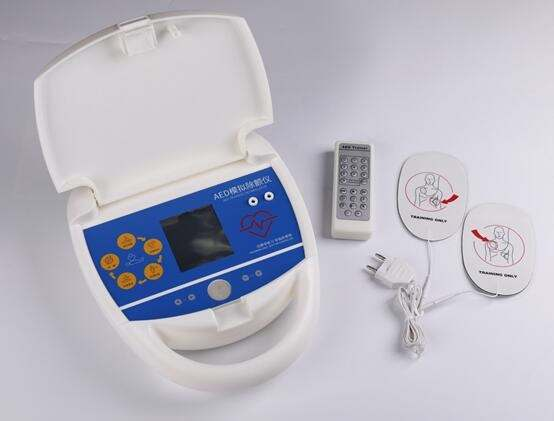

Article tag: Analog defibrillator| medical teaching tool|
Analog defibrillators simulate the real defibrillation process through a range of advanced technologies and designs, providing a highly simulated training environment for medical workers and students. The following are the main ways and features of the simulation defibrillat...
Analog defibrillators simulate the real defibrillation process through a range of advanced technologies and designs, providing a highly simulated training environment for medical workers and students. The following are the main ways and features of the simulation defibrillator to simulate the real defibrillation process:

Hardware simulation:
The appearance and size of an analog defibrillator is usually similar to that of a real defibrillator so that students can quickly adapt to the real device when operating it.
The electrode plate design also meets the standards of real defibrillators, including size, shape and connection, ensuring that students can experience a similar touch to the real device in simulated operation.
Software simulation:
The analog defibrillator has a highly simulated software program built in to simulate all functions of the real defibrillator, such as energy selection, charging, discharge, etc.
During simulated defibrillation, the software is able to simulate the patient's electrocardiogram (ECG) waveforms, including normal and abnormal waveforms (such as ventricular fibrillation waveforms). Participants can observe the simulated ECG waveform to determine the state of the patient's heart and make the right defibrillation decision accordingly.
Operation process simulation:
Analog defibrillators support complete operation process simulation, including startup, energy selection, charging, discharging, shutdown and other steps. Trainees must follow the actual defibrillator operation process to familiarize themselves with the defibrillator.
During the simulation, the software also provides real-time feedback and tips based on the trainees' operation, helping them correct errors and improve their operation skills.
Security protection mechanism:
Analog defibrillators have similar safety protection mechanisms as real defibrillators, such as anti-electric shock and anti-short circuit. These mechanisms can automatically cut off the power or send an alarm when the student is not operating properly, ensuring the safety of the student.
Record and evaluate:
The advanced analog defibrillator also has a recording and evaluation function, which can record the student's operation process and data, and provide a detailed evaluation report. These reports can help students understand their own operational level and improvement direction, and can also be used as an important basis for teachers to evaluate the learning effect of students.
Multiple modes of operation:
The analog defibrillator supports a variety of operating modes, including manual mode and automatic mode. These models can meet the training needs of different students and help them better master the use of defibrillator methods and skills.
In summary, the simulation defibrillator provides a real, safe and effective defibrillator training environment for medical workers and students through highly simulated hardware and software design, complete operation process simulation and safety protection mechanism.